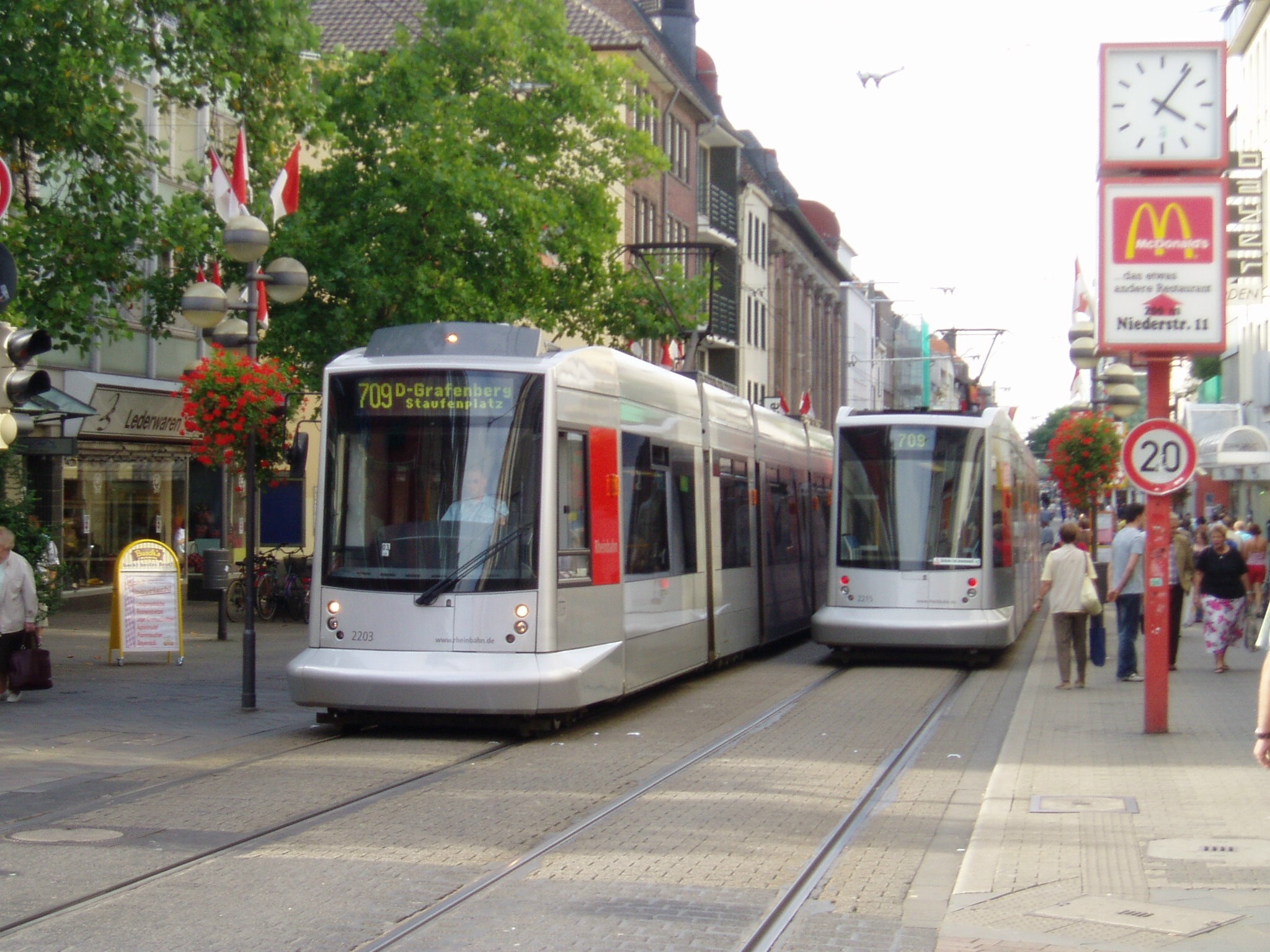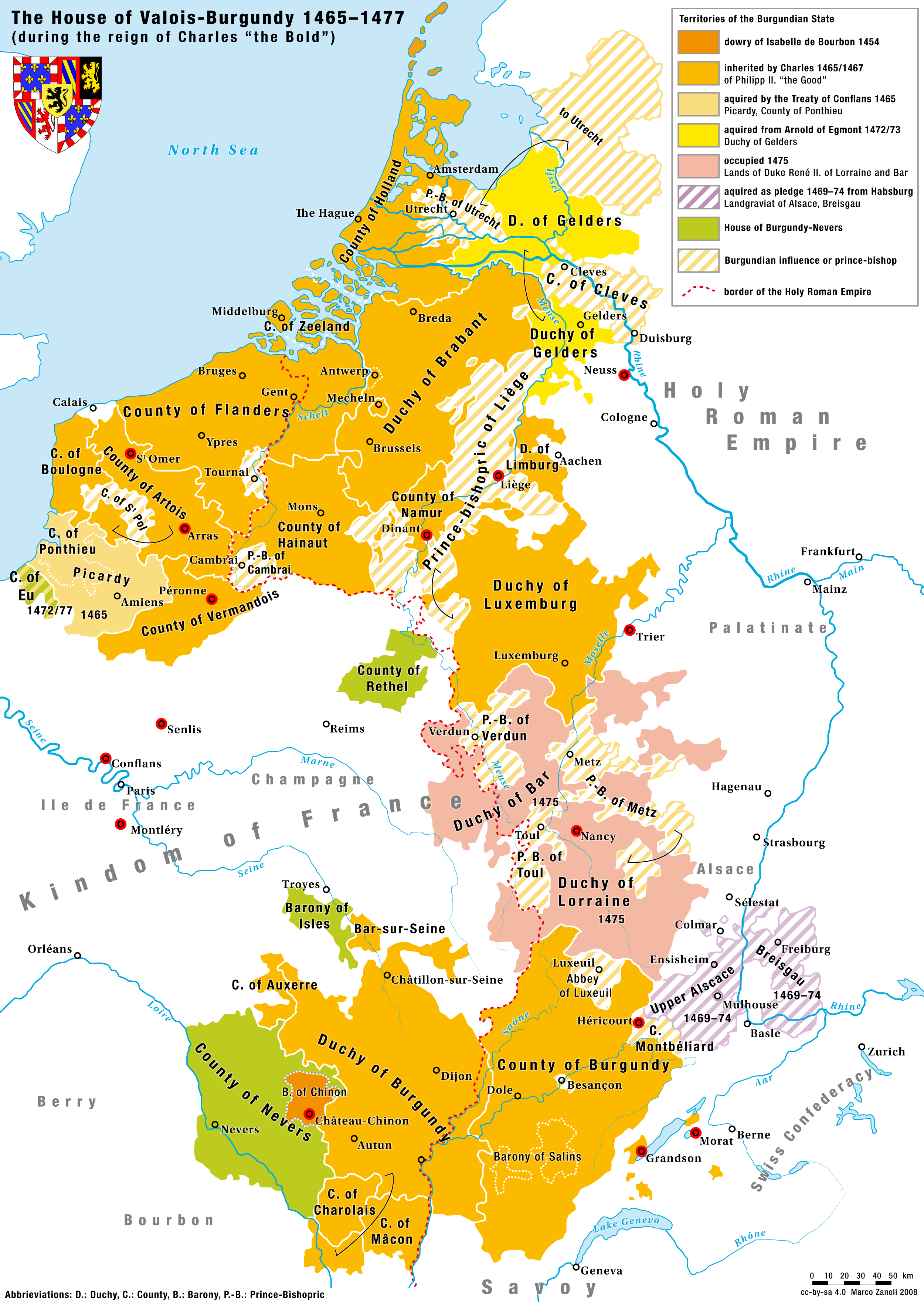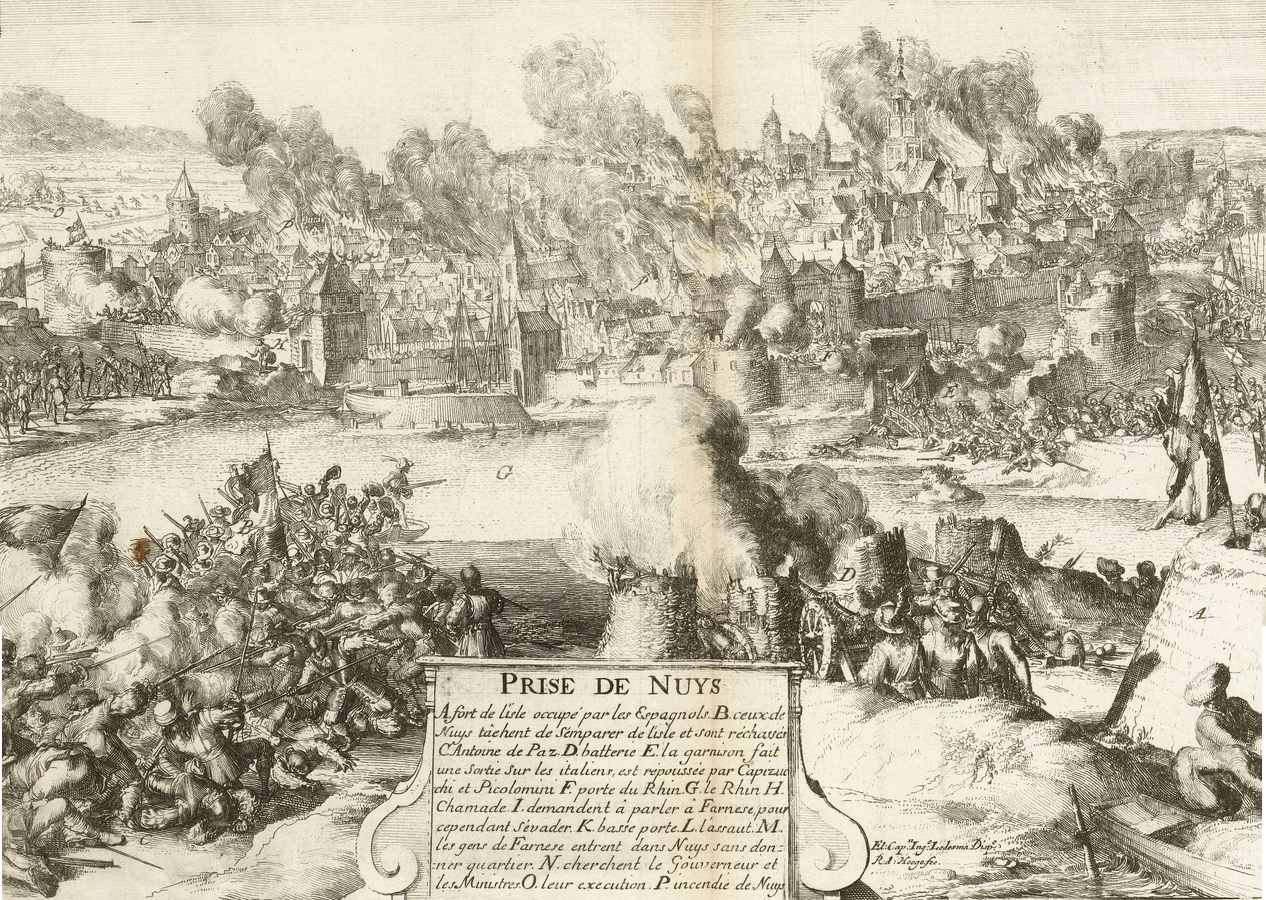|
Neuss
Neuss (; written ''Neuß'' until 1968; ; ) is a city in North Rhine-Westphalia, Germany. It is on the west bank of the Rhine opposite Düsseldorf. Neuss is the largest city within the Rhein-Kreis Neuss district. It is primarily known for its historic Roman sites, as well as the annual Neuss Schützenfest, Neusser Bürger-Schützenfest. Neuss and Trier share the title of "Germany's oldest city", and in 1984 Neuss celebrated the 2000th anniversary of its founding in 16 BCE. History Roman period Neuss was founded by the Ancient Rome, Romans in 16 BC as a military fortification (''castrum'') with the current city to the north of the castrum, at the confluence of the rivers Rhine and Erft, with the name of Novaesium. Legio XVI Gallica ("Gallic 16th Legion") of the Roman army was stationed here in 43–70 AD. It was disbanded after surrendering during the Batavian rebellion (AD 70). Later a civil settlement was founded in the area of today's centre of the town during the 1 ... [...More Info...] [...Related Items...] OR: [Wikipedia] [Google] [Baidu] |
Neuss Schützenfest
The Neuss Schützenfest, officially the Neuss' Citizens' Marksmen's Festival (), is the Schützenfest of the German city of Neuss. It is held annually on the last weekend in August. With more than 7,500 parading marksmen it is smaller than the Hanover Schützenfest but is regarded as the largest marksmen's festival in the world that is organized by a single association and does not include platoons from other cities. The year 2011 saw the largest number of trooping marksmen to date, with 6,951 marksmen taking part in the parade. The marksmen's festival with its royal parade, several processions, royal shooting competition and a great number of accompanying events is a social highlight of the city of Neuss and the surrounding area and attracts up to a million visitors each year. The largest number of visitors to date was recorded in 2007, with 1.5 million people coming to watch the Schützenfest. The Regiment While the Schützenfests of the Middle Ages were primarily military in cha ... [...More Info...] [...Related Items...] OR: [Wikipedia] [Google] [Baidu] |
Saint Quirinus Of Neuss
Quirinus of Neuss (), sometimes called Quirinus of Rome (which is the name shared by Saint Quirinus of Tegernsee, another martyr) is venerated as a martyr and saint of the Eastern Orthodox Church and Roman Catholic church.. His cult (religious practice), ''cultus'' was centred at Neuss in Germany, even though he was a Persecution of early Christians in the Roman Empire, Roman martyr. According to the ''Catholic Encyclopedia'', a Roman martyr named Quirinus was buried in the Catacomb of Prætextatus on the Via Appia. The ''Martyrologium Hieronymianum'' (ed. De Rossi-Duchesne, 52) mentions Quirinus' name and place of burial. The ''Itineraries'' to the graves of the Roman martyrs (Giovanni Battista De Rossi, "Roma sotterranea", I, 180–1) also mention these two pieces of information. The ''Martyrologium Hieronymianum '' assigns him under the calendar of saints, feast day of April 30, the date that appears in the catalogue of Roman martyrs of the 4th century. Legend Quirinus is intr ... [...More Info...] [...Related Items...] OR: [Wikipedia] [Google] [Baidu] |
Siege Of Neuss
The siege of Neuss, from 1474–75, was linked to the Cologne Diocesan Feud and part of the Burgundian Wars. The siege, led by Charles the Bold against the Imperial City of Neuss, was unsuccessful. Charles was compelled by the approach of a powerful Imperial army to raise the siege. Prelude Under Charles's father, Philip the Good, Burgundy had allied itself to the cause of the newly-elected Archbishop of Cologne, Ruprecht. Ruprecht proved immensely unpopular, and by 1471, several major towns in the archbishopric, as well as the Kölners themselves, were on the verge of revolt. Attempts by the Emperor Frederick III to mediate the conflict failed, and in 1474 Charles the Bold signed a treaty with Ruprecht which stipulated that Charles would subdue the rebels and serve as Ruprecht's lifelong protector in return for 200,000 florins a year. To secure his western border, Charles concluded a treaty with Louis XI of France and then prepared to march into the Rhine valley; conte ... [...More Info...] [...Related Items...] OR: [Wikipedia] [Google] [Baidu] |
Rhein-Kreis Neuss
Neuss is a Kreis (district) in the west of North Rhine-Westphalia, Germany. Nearby are the urban districts Mönchengladbach, Krefeld, Duisburg, Düsseldorf, Cologne, the districts Rhein-Erft-Kreis, Düren, Heinsberg and the district Viersen. History In 1816 the districts Grevenbroich and Neuss were created when the whole area became part of Prussia. The city of Neuss left the district in 1913 to become an urban district. In 1929 the two districts were merged into the new district Grevenbroich-Neuss, which was renamed to Grevenbroich in 1946. In 1975 the urban district of Neuss lost its independent status and was merged into the Grevenbroich district, which was renamed to ''Kreis Neuss'' to represent the new administrative seat. On May 26, 2003, it changed its name, and is now officially called ''Rhein-Kreis Neuss''. Geography The main rivers of the district is the Rhine which forms most of the north-eastern border of the district, as well as the Erft. In the southern part ... [...More Info...] [...Related Items...] OR: [Wikipedia] [Google] [Baidu] |
Charles The Bold
Charles Martin (10 November 1433 – 5 January 1477), called the Bold, was the last duke of Burgundy from the House of Valois-Burgundy, ruling from 1467 to 1477. He was the only surviving legitimate son of Philip the Good and his third wife, Isabella of Portugal. As heir and as ruler, Charles vied for power and influence with rivals such as his overlord, King Louis XI of France. In 1465 Charles led a successful revolt of Louis's vassals in the War of the Public Weal. After becoming the Duke of Burgundy in 1467, Charles pursued his ambitions for a kingdom, independent from France, that would stretch contiguously from the North Sea in the north to the borders of Savoy in the south. For this purpose, he acquired Guelders and Upper Alsace; sought the title King of the Romans; and gradually became an enemy of the Germans. Charles married Margaret of York for an English alliance. He arranged the betrothal between his sole child, Mary, with Maximilian of Austria. A passiona ... [...More Info...] [...Related Items...] OR: [Wikipedia] [Google] [Baidu] |
Destruction Of Neuss
The Destruction of Neuss occurred in July 1586, during the Cologne War. Alexander Farnese, Duke of Parma's troops surrounded the city of Neuss, an important Protestant garrison in the Electorate of Cologne. After the city refused to capitulate, Parma's army reduced the city to rubble through a combination of artillery fire, destructive house-to-house fighting, and plundering; during the battle, a fire started that destroyed most of the rest of the city. Approximately 3,000 civilians died, out of a population of around 4,500, and the entire garrison was killed. Situation in 1586 Neuss had been seized by supporters of the Protestant Prince-Elector Gebhard Truchsess von Waldburg in February 1586. Adolf, Count of Moers and Neuenahr, reinforced and supplied the city and took most of his troops north, to Moers and Venlo, leaving the young Friedrich Cloedt in command of the city. Cloedt had a garrison of 1600 men, mostly Germans and Dutch soldiers; some had military experience, ... [...More Info...] [...Related Items...] OR: [Wikipedia] [Google] [Baidu] |
Erft
The Erft () is a river in North Rhine-Westphalia, Germany. It flows through the foothills of the Eifel, and joins the Lower Rhine (left tributary). Its origin is near Nettersheim, and its mouth in Neuss-Grimlinghausen south of the Josef Cardinal Frings Bridge. The river is long, which is significantly shorter than it was originally. Due to the open-pit mining of lignite in the ''Hambacher Loch'', the flow of the river had to be changed. The Erft gave its name to the town of Erftstadt, through which it flows, as well as to the Rhein-Erft district. It also flows through the towns of Bad Münstereifel, Euskirchen Euskirchen (; Ripuarian language, Ripuarian: ''Öskerche'') is a town in North Rhine-Westphalia, Germany, capital of the Euskirchen (district), district Euskirchen. While Euskirchen resembles a modern shopping town, it also has a history dating ba ..., Bergheim, Bedburg and Grevenbroich. Gallery References Rivers of North Rhine-Westphalia Rivers of ... [...More Info...] [...Related Items...] OR: [Wikipedia] [Google] [Baidu] |
Düsseldorf
Düsseldorf is the capital city of North Rhine-Westphalia, the most populous state of Germany. It is the second-largest city in the state after Cologne and the List of cities in Germany with more than 100,000 inhabitants, seventh-largest city in Germany, with a 2022 population of 629,047. The Düssel, from which the city and the borough of Düsseltal take their name, divides into four separate branches within the city, each with its own mouth into the Rhine (Lower Rhine). Most of Düsseldorf lies on the right bank of the Rhine, and the city has grown together with Neuss, Ratingen, Meerbusch, Erkrath and Monheim am Rhein. Düsseldorf is the central city of the metropolitan region Rhine-Ruhr, the List of EU metropolitan regions by GDP#2021 ranking of top four German metropolitan regions, second biggest metropolitan region by GDP in the European Union, that stretches from Bonn via Cologne and Düsseldorf to the Ruhr (from Duisburg via Essen to Dortmund). The ''-dorf'' suffix mea ... [...More Info...] [...Related Items...] OR: [Wikipedia] [Google] [Baidu] |
North Rhine-Westphalia
North Rhine-Westphalia or North-Rhine/Westphalia, commonly shortened to NRW, is a States of Germany, state () in Old states of Germany, Western Germany. With more than 18 million inhabitants, it is the List of German states by population, most populous state in Germany. Apart from the city-states (Berlin, Hamburg and Bremen), it is also the List of German states by population density, most densely populated state in Germany. Covering an area of , it is the List of German states by area, fourth-largest German state by size. North Rhine-Westphalia features 30 of the 81 German municipalities with over 100,000 inhabitants, including Cologne (over 1 million), the state capital Düsseldorf (630,000), Dortmund and Essen (about 590,000 inhabitants each) and other cities predominantly located in the Rhine-Ruhr metropolitan area, the largest urban area in Germany and the fourth-largest on the European continent. The location of the Rhine-Ruhr at the heart of the European Blue Banana make ... [...More Info...] [...Related Items...] OR: [Wikipedia] [Google] [Baidu] |
Rheinbahn
Rheinbahn is a German public transport operator operating in Düsseldorf, Meerbusch and Kreis Mettmann. Its network consists of the Düsseldorf Stadtbahn, a network of 11 Stadtbahn (light rail) lines which are integrated in the Rhine-Ruhr Stadtbahn network, as well as Düsseldorf's tram system and 92 bus lines. The total rail network length was in 2021. In 2004, Rheinbahn transported 690,000 passengers per day. Areas served Two Stadtbahn lines are former light railway lines and connect to the cities of Duisburg ( D-Bahn, U79) and Krefeld via Meerbusch ( K-Bahn, U70/U76). The neighbouring city of Neuss is connected to the Rheinbahn network by Stadtbahn line U75 and tram line 709. The neighbouring city of Ratingen is connected by Stadtbahn line U72. Rheinbahn's bus lines cover Düsseldorf, Meerbusch and most parts of Kreis Mettmann. Organisation Rheinbahn is a member of the Verkehrsverbund Rhein-Ruhr (VRR), the public transport association covering the area of the Rhine ... [...More Info...] [...Related Items...] OR: [Wikipedia] [Google] [Baidu] |
Rhine
The Rhine ( ) is one of the List of rivers of Europe, major rivers in Europe. The river begins in the Swiss canton of Graubünden in the southeastern Swiss Alps. It forms part of the Swiss-Liechtenstein border, then part of the Austria–Switzerland border, Swiss-Austrian border. From Lake Constance downstream, it forms part of the Germany-Switzerland border, Swiss-German border. After that the Rhine defines much of the Franco-German border. It then flows in a mostly northerly direction through the German Rhineland. Finally, the Rhine turns to flow predominantly west to enter the Netherlands, eventually emptying into the North Sea. It drains an area of 185,000 km2. Its name derives from the Gaulish language, Gaulish ''Rēnos''. There are two States of Germany, German states named after the river, North Rhine-Westphalia and Rhineland-Palatinate, in addition to several districts of Germany, districts (e.g. Rhein-Sieg-Kreis, Rhein-Sieg). The departments of France, department ... [...More Info...] [...Related Items...] OR: [Wikipedia] [Google] [Baidu] |
Castrum
''Castra'' () is a Latin language, Latin term used during the Roman Republic and Roman Empire for a military 'camp', and ''castrum'' () for a 'Fortification, fort'. Either could refer to a building or plot of land, used as a fortified military base.. Included is a discussion about the typologies of Roman fortifications. In English language, English usage, ''castrum'' commonly translates to "Roman fort", "Roman camp" and "Roman fortress". Scholastic convention tends to translate ''castrum'' as "fort", "camp", "marching camp" or "fortress". Romans used the term ''castrum'' for different sizes of camps – including large Roman legion, legionary fortresses, smaller forts for Cohort (military unit), cohorts or for auxiliary forces, military camp, temporary encampments, and "marching" forts. The diminutive form ''castellum'' was used for fortlets, typically occupied by a detachment of a cohort or a ''centuria''. Etymology ''Castrum'' appears in Oscan language, Oscan and Umbrian ... [...More Info...] [...Related Items...] OR: [Wikipedia] [Google] [Baidu] |





